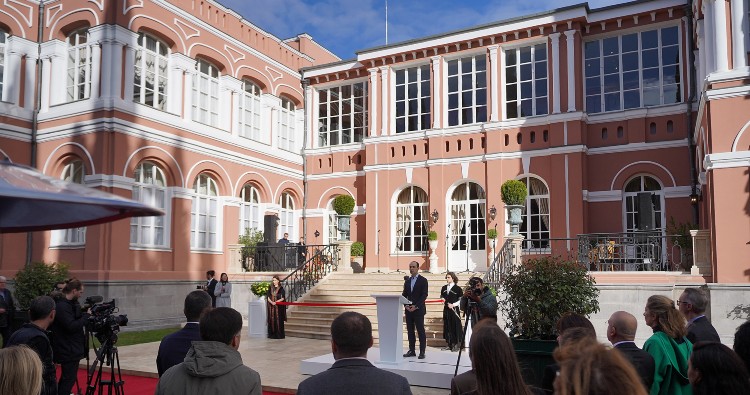Economy minister attends official opening of reconstructed historical palace of Chateau Mukhrani

Frederik Paulsen, the investor of the Chateau and Juan Pablo Molyneux, the world-renowned specialist in the restoration of historical interiors, who led the restoration process of the 120-year-old palace, also addressed the guests, which included the representatives of the Georgian government and local authorities. Photo: Economy ministry press office
Georgian economy minister and vice prime minister Levan Davitashvili on Saturday attended the official opening ceremony of the newly rehabilitated historical palace of Chateau Mukhrani in Georgia’s eastern village of Mukhrani, the economy ministry said.
In his welcome speech, Davitashvili thanked the Chateau investors for their work and noted that such investments would contribute to the “dynamic” development of wine tourism in Georgia, adding that Chateau Mukhrani, known as a “high-quality” wine-making centre, has been “one of the most” impressive places of wine tourism in the country “with an outstanding historical heritage”.
 Photo: Economy ministry press office
Photo: Economy ministry press office
In 2022, the tourism industry is distinguished by particularly high rates of recovery - our country [Georgia] received $2.5 billion income from tourism. In this regard, it is important to develop gastronomy and wine tourism that requires such high-quality infrastructure as Chateau Mukhrani", the economy minister noted.
Frederik Paulsen, the investor of the Chateau and Juan Pablo Molyneux, the world-renowned specialist in the restoration of historical interiors, who led the restoration process of the 120-year-old palace, also addressed the guests, which included the representatives of the Georgian government and local authorities.
The restoration process of the palace, built in the 19th century by Georgian nobleman of the Palace of Mukhrani, general Ivane Bagrationi (Mukhranbatoni) in the style of a French chateau, has been underway since 2016. The palace and its infrastructure, which covers 16 hectares and employs about 300 people, had been designed by French and Georgian architects.
 Tweet
Tweet  Share
Share